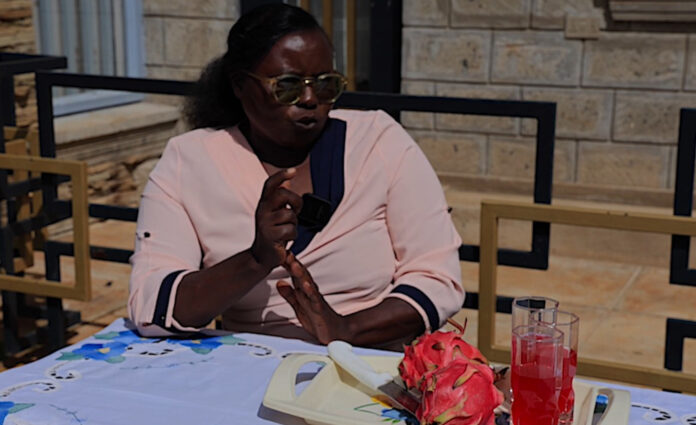Mrs. Monica Waiganjo is among the small group of farmers spreading the gospel about dragon fruits. This tropical fruit known for its bright red skin, has had farmers on the ‘millionaire’ chokehold since its introduction to Kenya six years ago.
After a career as a dedicated researcher with KALRO, Mrs Waiganjo traded her lab coat for a farmer’s hat in October 2022, choosing to specialise in her fulfilment venture; dragon fruit farming.
In 2021, Mrs. Waiganjo found success with dragon fruit. Now, she sells dragon fruit seedlings and grows other fruits like Hass avocados, pawpaws, and pomegranates.
The experienced horticultural specialist confirmed that among all the fruits she’s worked with, dragon fruit stands out as the most economically viable. Like many farmers, she started by obtaining cuttings from mature orchards to start her own cultivation.
“Dragon Fruit is easy! It can grow anywhere in this country, the only variation is that it will do well in the hotter areas,” she said.
Mrs. Waiganjo, who has served as a resource person for a World Bank-funded project, emphasizes that even a quarter-acre plot can be highly successful for commercial dragon fruit cultivation.
“In one post, worldwide it is recommended to do 4 seedlings or a minimum of 3 seedlings. If you do a spacing of 2.5 and 3 metres, you get about 155 posts. From those you can get a good amount of income,” Mrs Waiganjo clarified.
Mrs. Waiganjo encourages farmers to grow dragon fruit on their farms due to its long lifespan. With just one plant, they can yield up to 4 kilograms, with the peak production starting in the third year.
Micheal Musyoka: Kibwezi farmer making millions from growing high value fruits
Kenyan farmers have taken things a notch higher and are into value addition. Some are making wine, others are drying the fruit to make crisps, and some are turning it into juice, jam and yoghurt.
“The juice prepared comes from the skin. The fruit is rich in fibre and helps strengthen the immune system. It has lycopene which is a valuable element in the control of cancer as well as magnesium. The seeds also are rich in Omega 3”
According to Mrs. Waiganjo, the pricey nature of the fruit can attributed to the high initial investment, its scarcity, and the small number of farmers growing it. She noted there is huge demand globally from places like the EU, Poland, Dubai, and Spain.
“In Kenya, we can be able to produce 6 tonnes comfortably in one acre. In other countries, they have reported 12 tonnes. We can get there with proper management. Our climate is good,” she stated.








